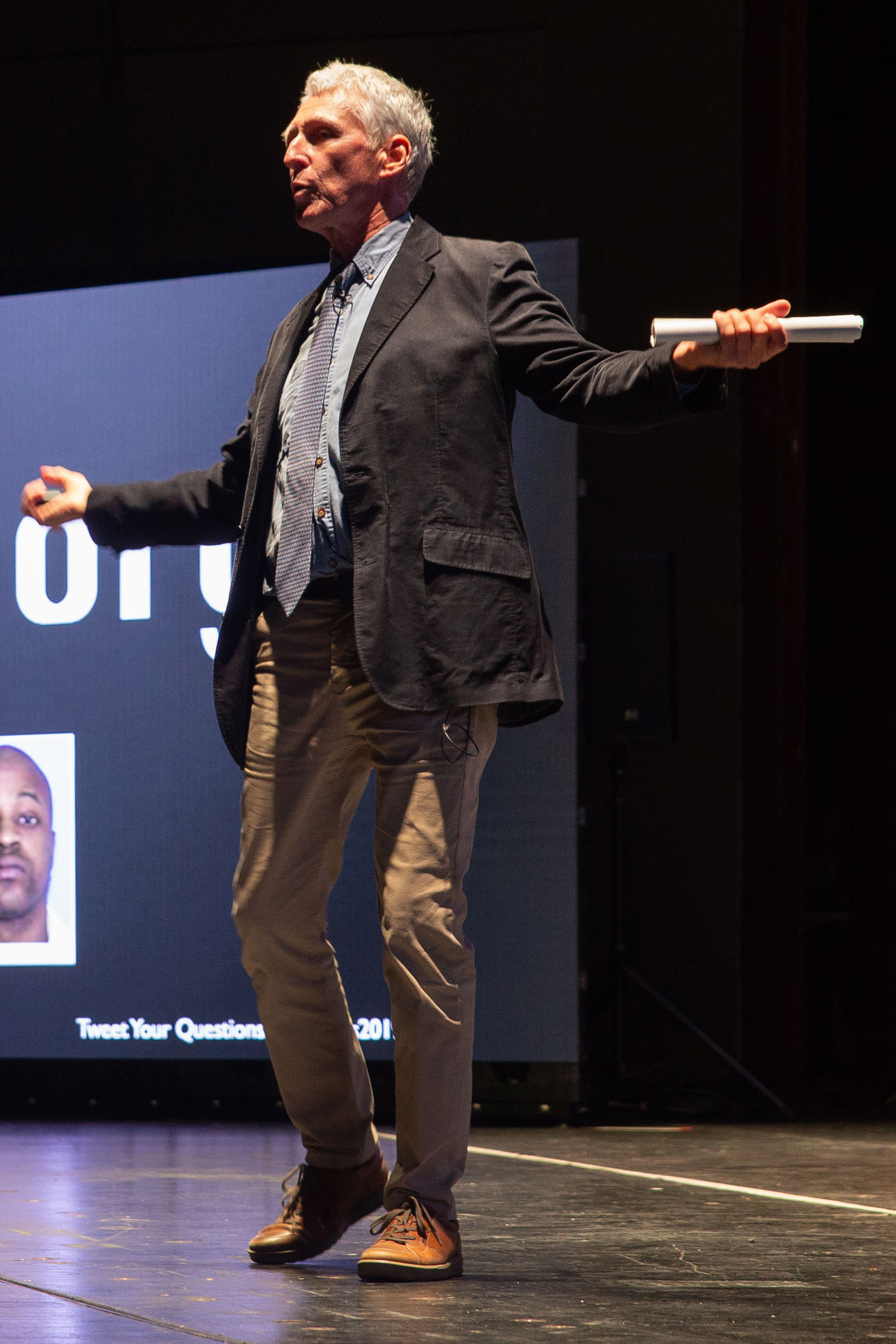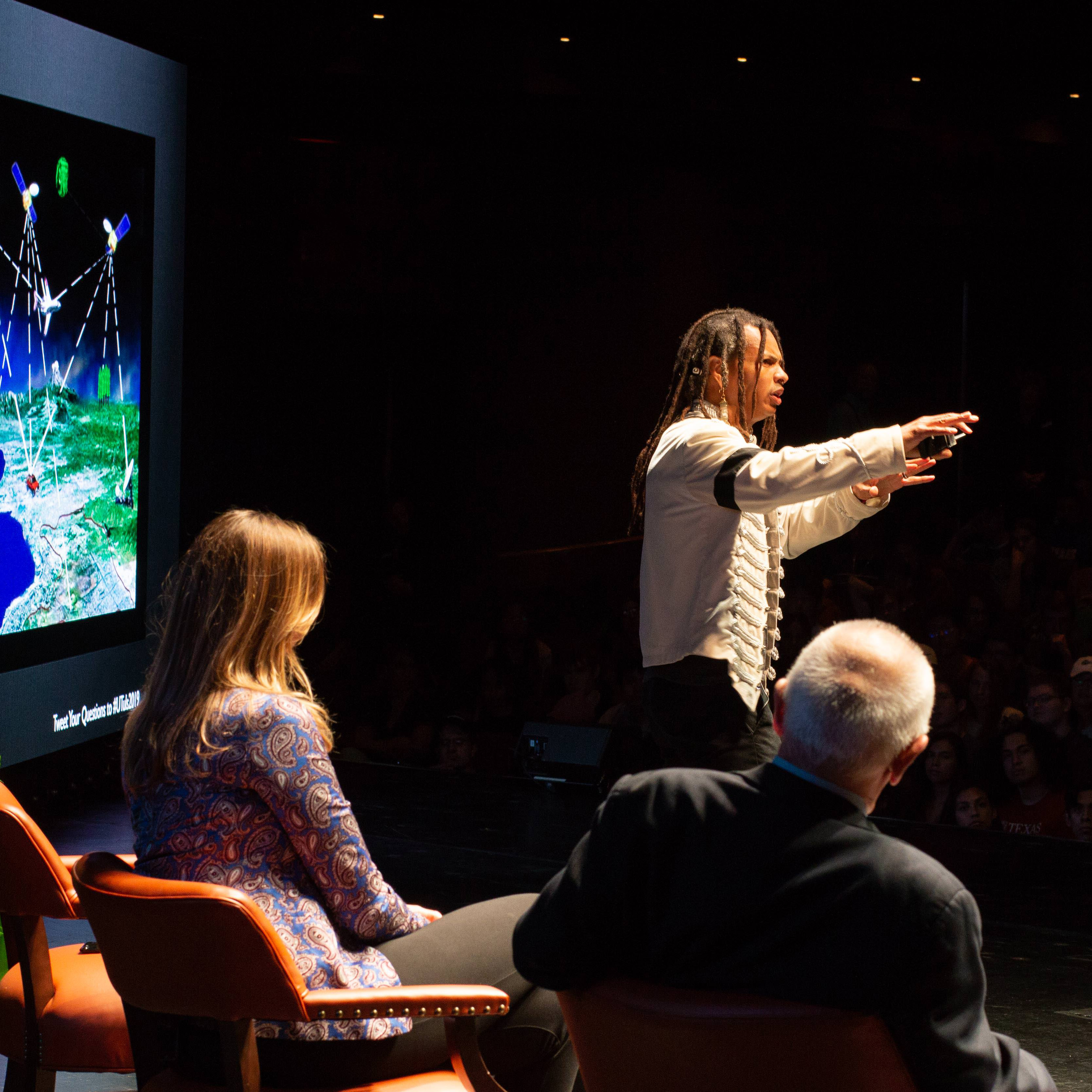At the thirteenth annual University Lecture Series, highly-accomplished professors from across the university delivered compelling presentations to audiences of first-year students. Students were encouraged to tweet with the hashtag #UTuls2019 throughout each presentation, and UGS Dean Brent Iverson selected audience questions to be discussed by the presenters. Hosted in Bass Concert Hall by the School of Undergraduate Studies, the goal of the lecture series is to create a campus-wide conversation.

Night one, called “How Do You Plead? A Look into the American Justice System,” addressed the role of the death penalty throughout U.S. history and into the present day. Iverson introduced the series with some context for new students to consider. “One of the most important things you can learn in college,” he explained, “is how to analyze, investigate, and then discuss complex, and even controversial topics.” Law professor Jordan Steiker began with a detailed timeline of the death penalty both in the United States. He argued that while the U.S. was one of the first nations to reform the death penalty back in 1790, we have now fallen behind other first-world nations. Dr. James Patton, a professor in the Department of Special Education, provided a more personal perspective reflecting on his experiences serving as an expert witness to establish the competency of defendants. He emphasized the complex relationship between the death penalty and intellectual disability. Dr. Mary Rose from the Department of Sociology discussed her research on jury behavior and decisions. She provided multiple instances in which the death penalty was used as a tool to manipulate defendants into taking a plea deal.

Night two, titled “One Giant Leap,” celebrated the fiftieth anniversary of the first moon landing. Dean Iverson introduced the evening’s lectures by relating the sense of awe he felt when he looked up at the moon in 1969 and knew that men were walking on its surface. Dr. Wallace Fowler of the Department of Aerospace Engineering presented the first lecture with a focus on the engineering feats and challenges of NASA’s space missions. Fowler also discussed the qualities of astronauts Neil Armstrong and Alan Bean, the first and only Longhorn on the moon. Dr. Caitlin Casey from the Department of Astronomy followed with what we’ve learned about our universe far beyond the moon. Casey discussed advances in modern astronomy and showed a selection of images made by the Hubble Space Telescope. Dr. Moriba Jah brought things back to the present by discussing the critical importance of satellites in navigation, weather monitoring, and communication. Looking forward, Jah discussed what it would take to make space more “secure, safe, and sustainable.”
The University Lecture Series is supported by the Audre and Bernard Rapoport Excellence Fund for Undergraduate Studies.


